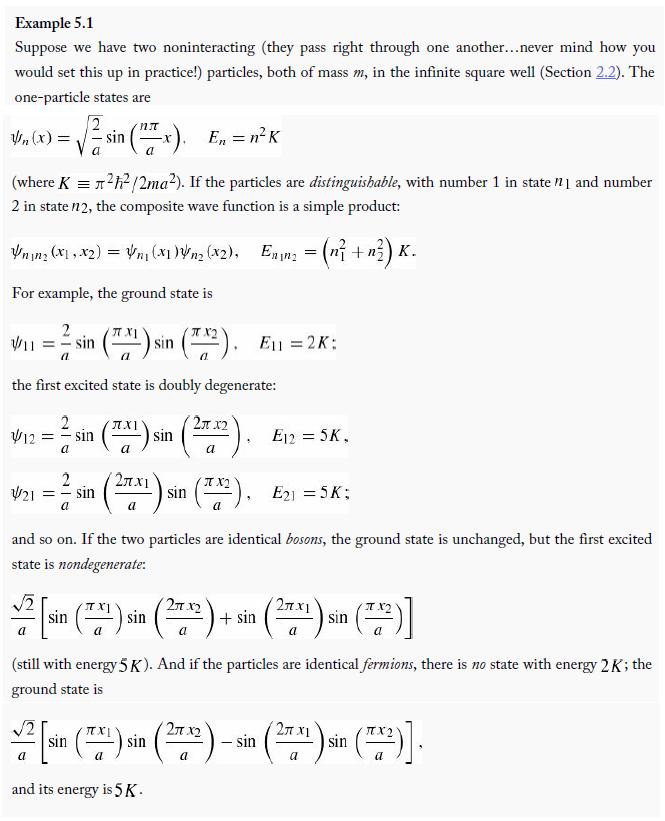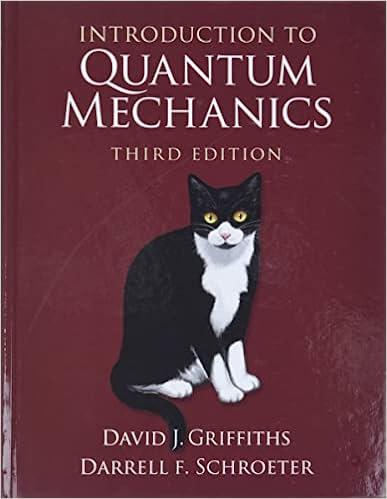In Example 5.1 and Problem 5.5(b) we ignored spin (or, if you prefer, we assumed the particles
Question:
In Example 5.1 and Problem 5.5(b) we ignored spin (or, if you prefer, we assumed the particles are in the same spin state).
(a) Do it now for particles of spin 1/2. Construct the four lowest-energy configurations, and specify their energies and degeneracies. Use the notation Ψn1n2 |sm), where Ψn1n2 is defined in Example 5.1 and |sm) in Section 4.4.3.
(b) Do the same for spin 1.
Problem 5.5 (b)
Find the next two excited states (beyond the ones given in the example)—wave functions, energies, and degeneracies—for each of the three cases (distinguishable, identical bosons, identical fermions).
Example 5.1

Fantastic news! We've Found the answer you've been seeking!
Step by Step Answer:
Related Book For 

Introduction To Quantum Mechanics
ISBN: 9781107189638
3rd Edition
Authors: David J. Griffiths, Darrell F. Schroeter
Question Posted:





